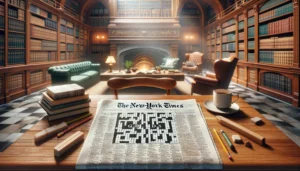Imagine a world without masterpieces like Leonardo da Vinci’s Mona Lisa or Vincent van Gogh’s Starry Night. It seems unfathomable, doesn’t it? Paintings have long been regarded as the windows to our collective soul, capturing moments in time and preserving them for generations to come. In a city known for its glitz and glamour, there lies a hidden trove of artistic wonders waiting to be discovered – Los Angeles’ interior painting. These walls are storytellers, whispering tales of passion, rebellion, and self-expression with every stroke. But their influence goes far beyond aesthetics; they shape our culture and reflect the society in which they were created. In this article, we will delve into the profound impact that paintings have had on shaping our culture throughout history, from Renaissance classics to modern abstract expressions.
The Power of Visual Art
Visual art has the incredible ability to transcend language barriers and convey complex emotions and ideas in a universal manner. By capturing a single moment or concept on canvas, artists can provoke strong emotional responses, spark dialogue, and challenge societal norms. Whether it be the subtle brushstrokes of a landscape painting or the bold colors and abstract shapes of modern art, visual art has the power to captivate viewers and invite them into new realms of thought.
One of the most remarkable aspects of visual art is its ability to document history and preserve cultural identity. From ancient cave paintings to Renaissance masterpieces, each piece tells a unique story about its time period and sheds light on social, political, and cultural contexts. Through famous works like Leonardo da Vinci’s Mona Lisa or Vincent van Gogh’s Starry Night, we are transported back in time and provided with invaluable glimpses into different eras. Moreover, visual art serves as an important tool for marginalized communities to reclaim their narratives. Artists from underrepresented backgrounds use their work as a means of expressing their experiences, combating stereotypes, and challenging dominant narratives that have long silenced them.
Social Commentary: Art as a Reflection of the Times
Art has long been recognized as a powerful tool for social commentary, serving as a mirror to reflect the times in which it is created. Throughout history, artists have used their creativity and imagination to challenge societal norms, provoke thought, and spark conversations about pressing social issues. From 17th century masterpieces portraying political corruption to modern-day graffiti denouncing racial injustice, art has continuously evolved to address the concerns and realities of the world.
One way in which art functions as a reflection of the times is by capturing the prevailing cultural attitudes and beliefs. Paintings depict not only what is visually present, but also encapsulate the values and ideals prevalent during that period. They provide a visual narrative of what society deems important or worthy of attention. By analyzing these artworks, we can gain insights into past societies – their fears, aspirations, prejudices – allowing us to better understand historical movements and social transformations. Moreover, art has often served as a catalyst for change by challenging conventional wisdom and questioning authority. Throughout history, many groundbreaking works have pushed boundaries and sparked controversy by addressing sensitive topics such as war, race relations or gender inequality. Artists use their craft to give voice to marginalized communities or shine a light on injustices that may otherwise be glossed over by mainstream media or forgotten over time.
Cultural Identity: Representation and Diversity in Artwork
Artwork has long played a significant role in representing and reflecting cultural identity. Whether it be through paintings, sculptures, or other mediums, art has the power to capture and convey the essence of diverse cultures. However, what is crucial in today’s society is recognizing and celebrating the importance of representation and diversity within these artistic expressions.
One way this can be achieved is by featuring artists from a multitude of backgrounds and perspectives. Embracing diversity means including artists who come from different racial, ethnic, and cultural backgrounds to ensure that various narratives are being shared. This practice not only adds depth to artwork but also allows for a more inclusive representation of different cultures. By actively seeking out artists outside of mainstream norms, we can challenge the Eurocentric view that often dominates the art world. Moreover, it is essential to encourage authentic cultural storytelling within artwork itself. Art should not merely appropriate elements from different cultures without understanding their significance or historical context; instead, it should aim to amplify voices that have been marginalized or overlooked. Incorporating traditional symbols and motifs specific to particular cultures while respecting their origins can allow for a richer portrayal of cultural identity.
Political Influence: The Role of Paintings in Shaping Politics
One might argue that paintings are more than just visual representations of artistic skill—they have the power to shape politics. Throughout history, artists have used their canvases as a means of expressing their political beliefs and influencing societal opinion. Take for example Jacques-Louis David’s iconic painting, The Death of Marat. Depicting the French revolutionary leader lying dead in his bathtub, this piece not only mourns Marat’s untimely demise but also serves as a call to arms for those who shared his radical ideals. Paintings don’t just serve as vehicles of expression; they also play an active role in shaping politics by immortalizing or criticizing political figures themselves. Consider George P.A. Healy’s portrait of Abraham Lincoln, aptly titled The Peacemakers. This powerful image depicts Lincoln alongside his top generals and suggests that he was instrumental in ending the American Civil War and bringing peace to a divided nation. By asserting Lincoln’s leadership qualities through art, Healy may have contributed to the elevation of Lincoln’s status as one of America’s greatest presidents.
Conclusion: The Enduring Influence of Paintings
In conclusion, the enduring influence of paintings cannot be understated. While many may argue that in today’s digital age, traditional artwork is losing its relevance, the power that paintings hold over society remains unwavering. Paintings are not simply decorative pieces; they transcend time and space to spark emotions, provoke thought, and inspire change.
Step into a world where brushes dance across walls and colors come alive with every stroke – the realm of house painting contractors. Beyond mere layers of paint, these skilled artisans weave stories and evoke emotions through their artistic prowess. By capturing such a pivotal moment in history, David effectively stoked the flames of revolution and fueled the fervor for change.
One aspect of paintings’ enduring influence lies in their ability to capture history. Whether it is a Renaissance masterpiece or a contemporary work of art, paintings serve as snapshots into different periods and cultures. They provide valuable insight into societal norms, political climates, and individual experiences of artists from various eras. In this way, paintings serve as valuable historical documents that allow us to better understand our past and guide us in shaping our future. Furthermore, the impact of paintings on culture cannot be ignored. From iconic works like Leonardo da Vinci’s Mona Lisa to Claude Monet’s Water Lilies series, these artworks have become ingrained in popular culture. Reproductions adorn coffee mugs and t-shirts; references appear in movies and music. These images have become part of our collective consciousness and have shaped artistic trends across various mediums.







